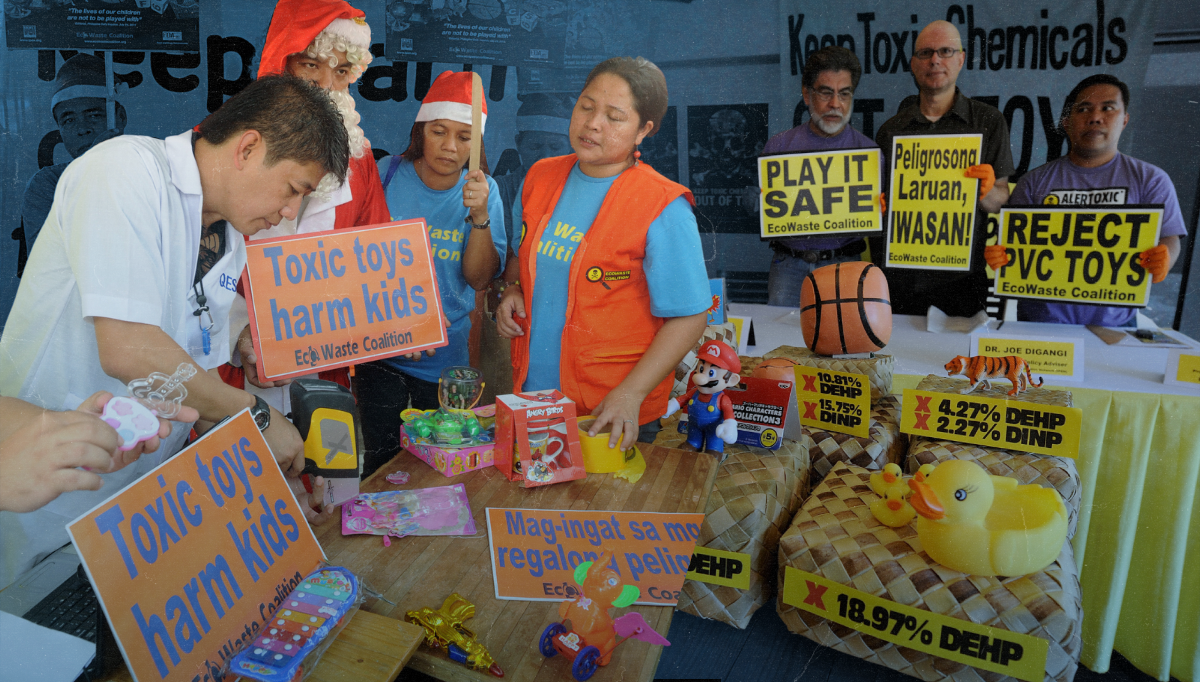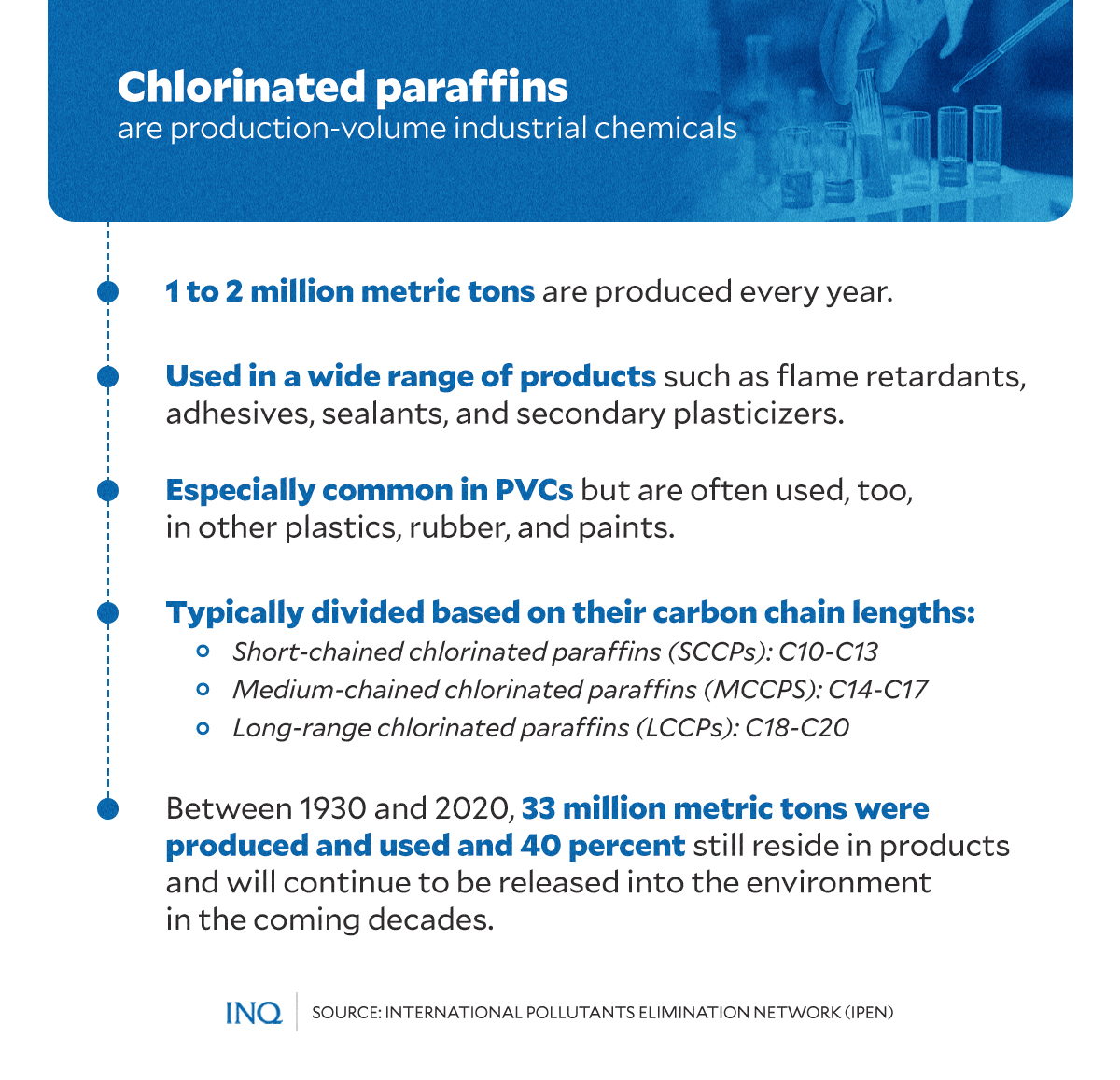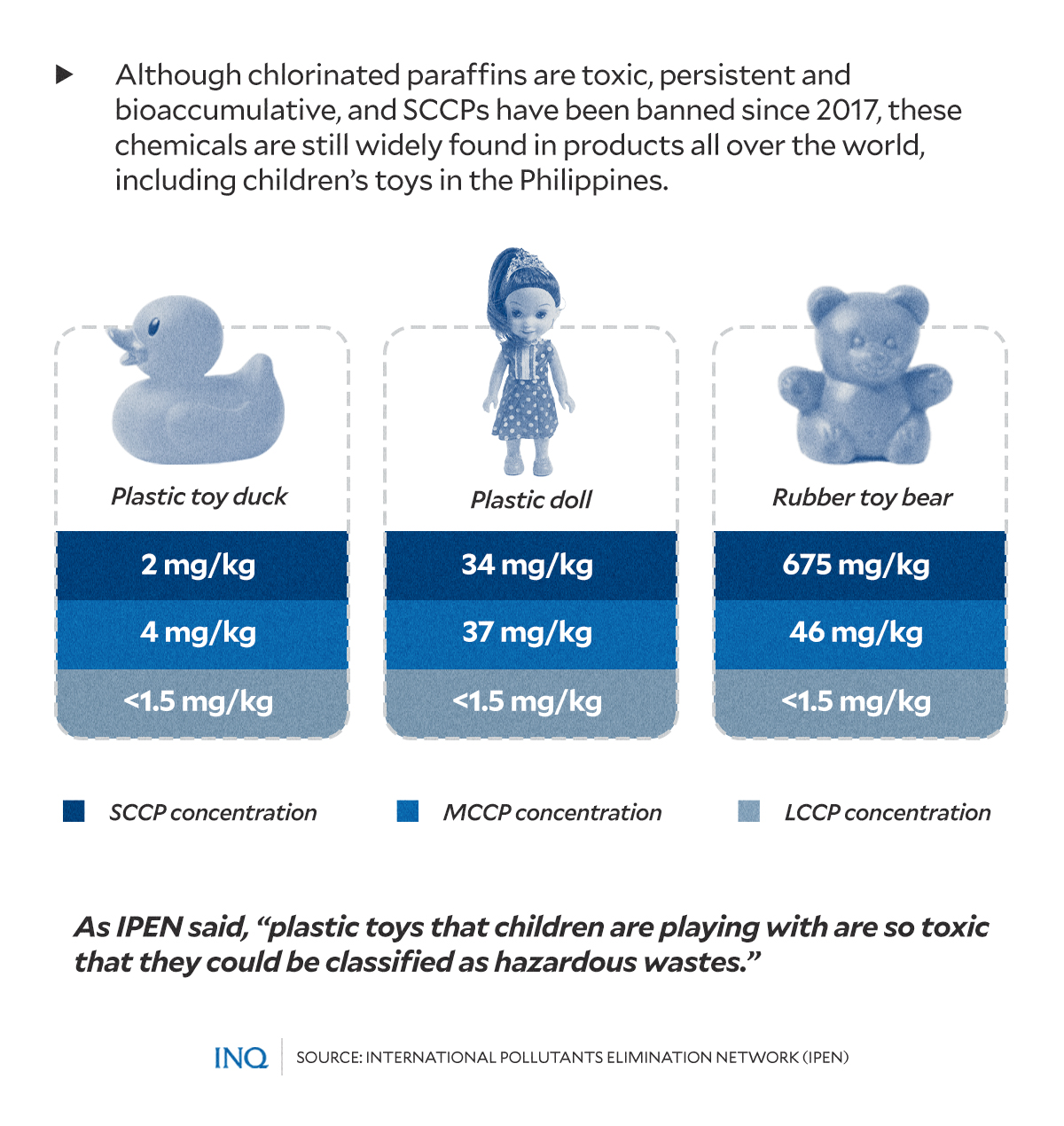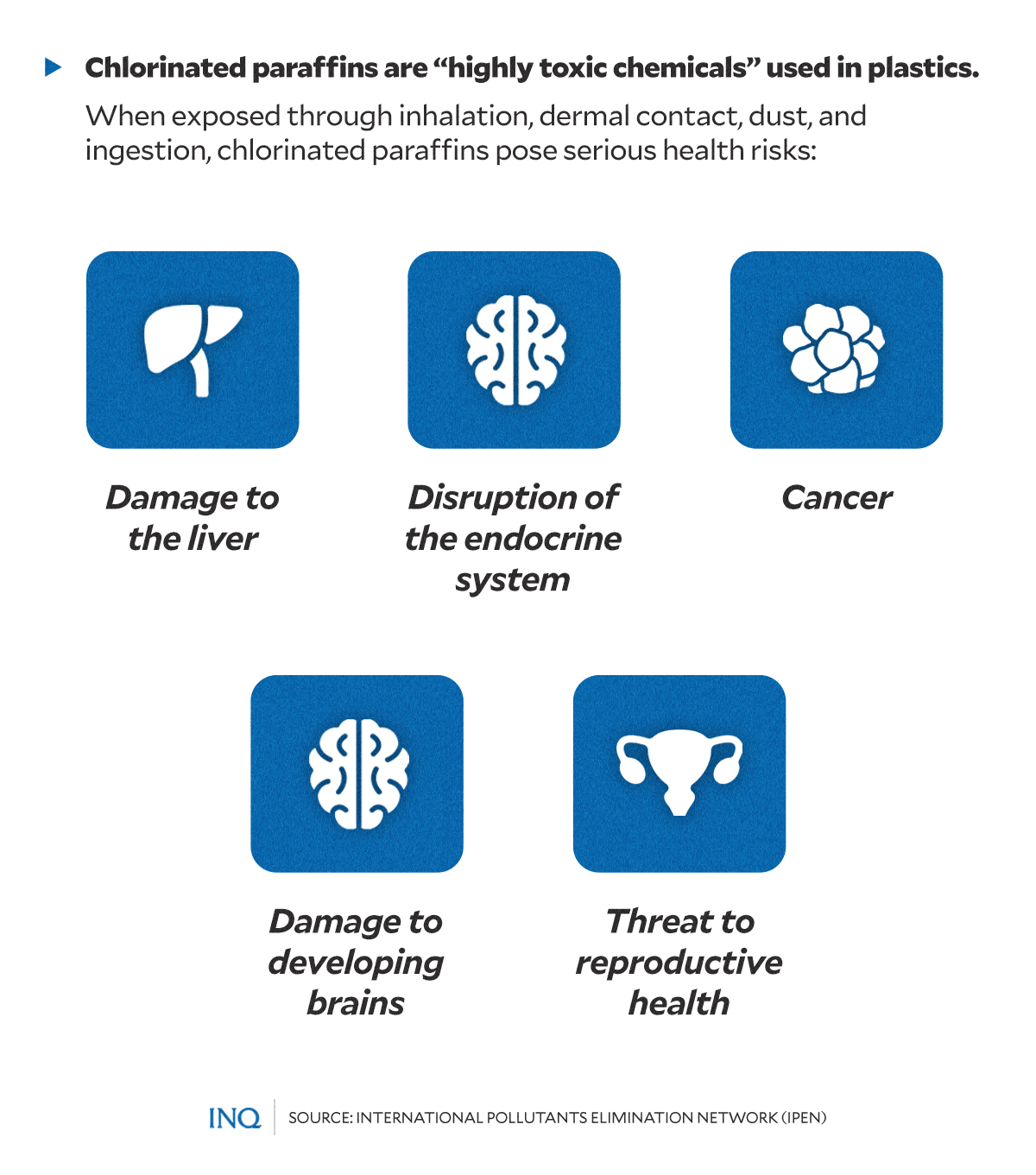Christmas gift-giving: Avoid these plastic toys, they contain poison
MANILA, Philippines—Christmas is getting really close so is gift-giving, especially to children and a group keeping an eye on toxic products is warning this early against plastic toys that contain poisonous chemicals called chlorinated paraffin.
“We unknowingly expose our children to plastic toys with toxic chemicals,” said Ban Toxics, a watchdog group monitoring the production and sale of products that contain highly lethal chemicals or parts.
Chlorinated paraffin, Ban Toxics said, has been banned worldwide since 2017 because of its deadly effects on health, especially of children’s.
According to the International Pollutants Elimination Network (IPEN), chlorinated paraffins, typically classified based on their carbon chain lengths, are “highly toxic chemicals” used in plastic products.
It said SCCPs have a carbon chain length of 10 to 13, while medium-chained chlorinated paraffins (MCCPs) and long-range chlorinated paraffins (LCCPs) have a carbon chain length of 14 to 17 and 18 to 20.
Article continues after this advertisementIn 2017, SCCPs have been prohibited under the Stockholm Convention on Persistent Organic Pollutants, a legally binding agreement adopted by 91 states, including the Philippines.
Article continues after this advertisementThere was no exemption, even for toys.
However, a new study conducted by IPEN on samples collected from 10 countries, including the Philippines, and analyzed at a laboratory in Prague, revealed that the “hazardous chemicals” are still present in plastic toys such as these:
- Inflatable horses
- Shrilling chickens
- Rubber ducks
- Dolls
- Bears
RELATED STORY: ‘Shrilling chicken’ is cute but very dangerous, says toxic watch group
According to IPEN, all 31 plastic toys purchased from 10 countries—Benin, Burundi, Cameroon, Democratic Republic of the Congo, India, Malaysia, Mali, Philippines, Uganda, and the USA—had both SCCPs and MCCPs.
This was stated in IPEN’s latest report, “Are Your Children’s Toys Hazardous Waste? High Levels of Chlorinated Paraffins in Plastic Toys from Ten Countries,” written by Therese Karlsson and Pamela Miller.
IPEN pointed out that some of the samples even contained levels of SCCPs that are so high they could already be classified as “hazardous waste,” or those that have substantial or potential threats to public health or the environment.
Toys from the Philippines such as rubber ducks, dolls, and bears, had SCCP concentrations of 2 milligram (mg)/kilogram (kg), 34 mg/kg, and 675 mg/kg, respectively.
The result indicated, too, that rubber ducks from the Philippines had an MCCP concentration of 4 mg/kg, while dolls and bears had 37 mg/kg and 46 mg/kg, IPEN stressed.
Dangerous
As pointed out by BAN Toxics, when these hazardous chemicals persist in several consumer products, like toys, they endanger people, especially children, who get exposed to them.
RELATED STORY: Parents warned against buying school items that may contain lead
IPEN explained that children get exposed to chemicals in toys through inhalation of toxic dust or contaminated air, skin exposure, and ingestion, which can either be exposure to the mouth or by chewing.
It said since chlorinated paraffins are highly toxic chemicals, they pose serious health risks such as damage to the liver, disruption of the endocrine system, cancer, damage to developing brains, and threat to reproductive health.
Sadly, none of the toys collected and tested by IPEN were labeled for the presence of toxic chemicals. “The results show the importance of labeling and traceability throughout the plastics life cycle,” IPEN said.
For BAN Toxics, the lack of sufficient and proper labeling compounds the problem, stressing the significance of transparency and traceability in plastic product materials to enable informed decision-making throughout the product value chain.
“Regulation, limitation, gradual phaseout, or banning of these toxic substances are necessary to safeguard human health and the environment,” it said, calling on the government to address the issue on chlorinated paraffins.



